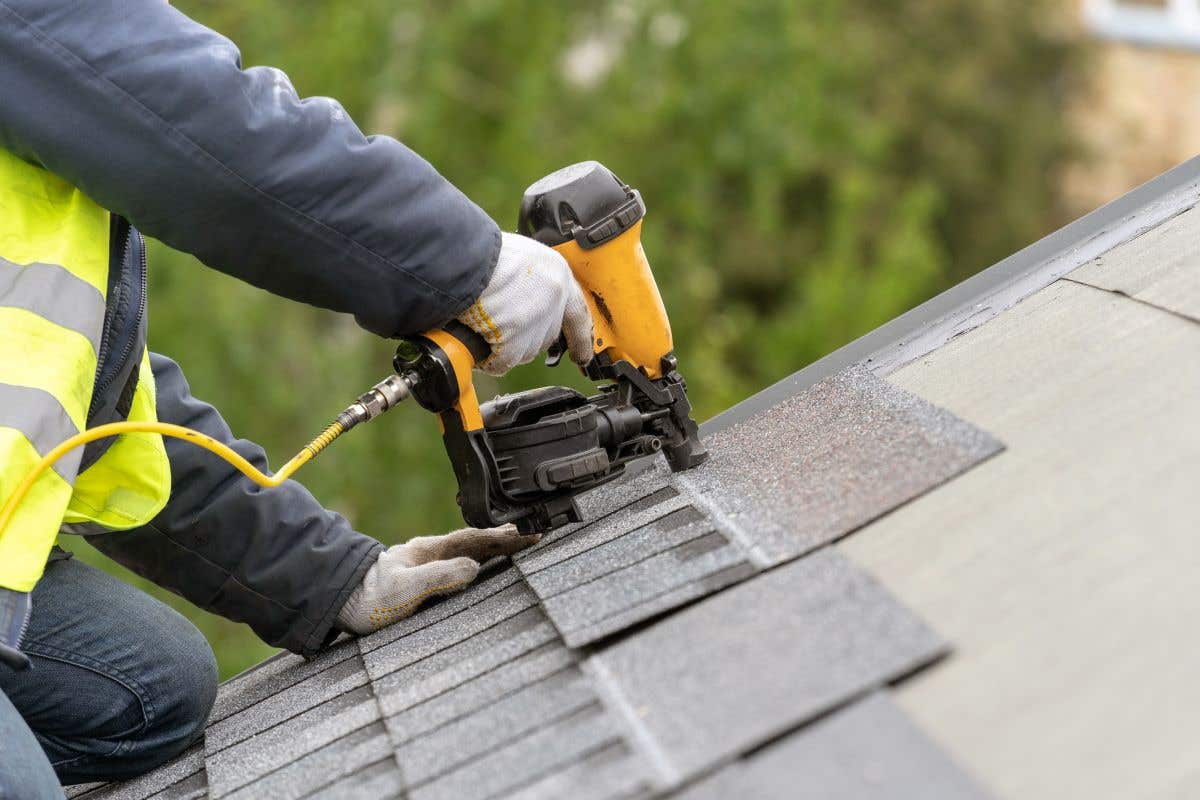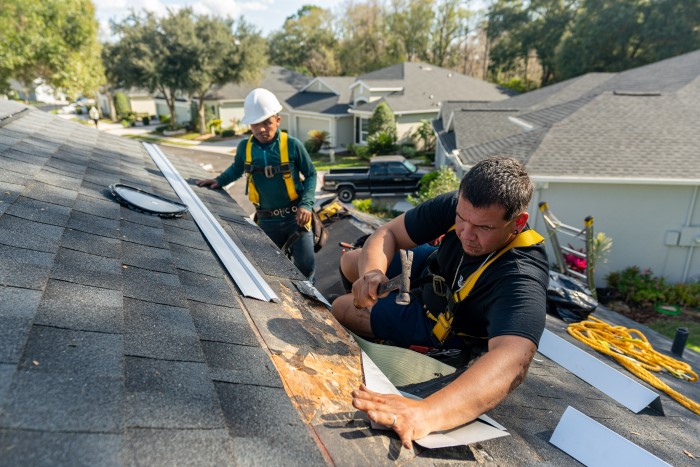Understanding the Different Kinds Of Roof Coverings: A Comprehensive Guide for Homeowners
With a variety of alternatives-- varying from the typical gable to the contemporary level-- each kind offers special advantages and challenges that ought to line up with the house owner's ecological factors to consider and certain requirements. As we discover the ins and outs of various roof covering kinds, it ends up being evident that one dimension does not fit all; the best selection may surprise you.
Saddleback Roof
Gable roofs, characterized by their triangular form, are amongst the most popular roof styles as a result of their simplicity and efficiency in losing water and snow. This design includes 2 sloping sides that satisfy at a ridge, permitting efficient drain and minimizing the threat of water buildup. The steep pitch frequently related to gable roof coverings enhances their capacity to handle hefty precipitation, making them suitable for numerous climates.
Along with their practical benefits, gable roof coverings use visual versatility. They can be adjusted to numerous building styles, from traditional to contemporary homes. The layout can additionally accommodate additional features such as dormer windows, which improve all-natural light and air flow in the attic room room.
In addition, saddleback roofs provide adequate area for insulation, contributing to energy effectiveness. Homeowners can select from a range of roof covering products, including asphalt tiles, steel, and floor tiles, additionally improving modification alternatives.
Regardless of their advantages, saddleback roofs may call for added assistance in areas prone to high winds or hefty snowfall. Generally, the gable roofing stays a preferred option due to its mix of functionality, longevity, and aesthetic charm.
Flat Roofs
Flat roof coverings are often recognized for their minimal style and useful applications, particularly in business and commercial settings (oahu roofing). These roofing systems feature a nearly straight or straight surface area, which enables very easy building and construction and versatile area use. While they might lack the visual charm of angled roofs, flat roof coverings supply countless advantages, especially in metropolitan settings where making the most of area is crucial
Among the main advantages of level roofs is their access. Property owners can make use of the roofing space for various purposes, such as roof yards, terraces, or photovoltaic panel setups. Furthermore, level roofs are commonly a lot more cost-effective to mount and keep compared to their sloped equivalents, as they require less products and labor.
Typical products used for level roofs include built-up roofing (BUR), customized bitumen, and single-ply membrane layers, each offering distinct benefits. Overall, level roof coverings serve as a versatile and useful choice for numerous house owners and services alike.
Hip Roofing Systems
Hip roofing systems are defined by their sloped sides that converge on top, creating a ridge. This layout is distinct from gable roofing systems, as all 4 sides of a hip roofing system slope downwards toward the walls, giving an extra steady structure. The angle of the inclines can differ, permitting adaptability in architectural looks and capability.
One of the key benefits of hip roof coverings is their capability to hold up against hefty winds and adverse weather. The sloped surfaces allow much better water drain, reducing the danger of leaks and water damage. Furthermore, hip roofing systems offer enhanced attic room, which can be made use of for storage space or perhaps exchanged comfortable areas.
Nonetheless, building a hip roofing system can be more complex and costly than easier roof types, such as gable roof coverings. The extra product and labor associated with developing the inclines and ensuring correct structural stability can lead to greater costs. Regardless of these disadvantages, several house owners favor hip roofs for their longevity, aesthetic allure, and capacity for energy efficiency.
Mansard Roofings
Mansard roof coverings, commonly identified by their one-of-a-kind four-sided layout, feature 2 inclines on each side, with the lower incline being steeper than the upper. This architectural style, originating from France in the 17th century, is not just aesthetically appealing yet practical, as it maximizes the usable space in the top floorings of a structure. The steep reduced incline permits even more headroom, making it a suitable choice for attics or lofts, which can be transformed into living spaces.
Mansard roofings are characterized by their adaptability, suiting numerous architectural styles, from conventional to modern. They can be created with various products, consisting of asphalt shingles, slate, or metal, offering house owners with a variety of alternatives to match their choices and budgets. Additionally, the style allows for the combination of dormer home check that windows, boosting all-natural light and air flow in the upper levels.
Nevertheless, it is important to take into consideration the possible disadvantages. Mansard roofings might require more maintenance because of the intricacy of their style, and their high slopes can be challenging for snow and rain drainage. Overall, mansard roofings combine beauty with practicality, making them a prominent choice among homeowners seeking unique architectural features.
Lost Roofing Systems
As house owners progressively look for simpleness and capability in their building designs, dropped roofs have become a prominent option. Identified by a single sloping aircraft, a shed roofing presents a minimal aesthetic that enhances various home styles, from contemporary to rustic.
Among the main advantages of a shed roofing is its simple building, which usually equates to lower labor and product costs. This design permits efficient water drain, lowering the danger of leaks and water damage. Additionally, the upright incline gives sufficient room for skylights, additional resources enhancing all-natural light within the inside.
Shed roofing systems additionally offer convenience in regards to use. They can be properly incorporated right into enhancements, garages, or outside structures like structures and sheds. In addition, this roof style can suit different roofing products, including metal, asphalt roof shingles, or even environment-friendly roofings, straightening with environmentally friendly campaigns.
However, it is crucial to consider regional climate conditions, as heavy snow lots may demand modifications to the roofing's angle or structure. In general, shed roofing systems present a practical and cosmetically pleasing choice for house owners wanting to take full advantage of performance without jeopardizing style.
Verdict


Gable roof coverings, defined by their triangular shape, are among the most popular roof designs due to their simpleness Your Domain Name and efficiency in dropping water and snow. oahu roofing. The high pitch commonly connected with gable roof coverings improves their capability to deal with hefty rainfall, making them suitable for numerous climates
While they may lack the aesthetic appeal of pitched roofs, flat roof coverings offer many benefits, specifically in urban atmospheres where maximizing space is vital.
